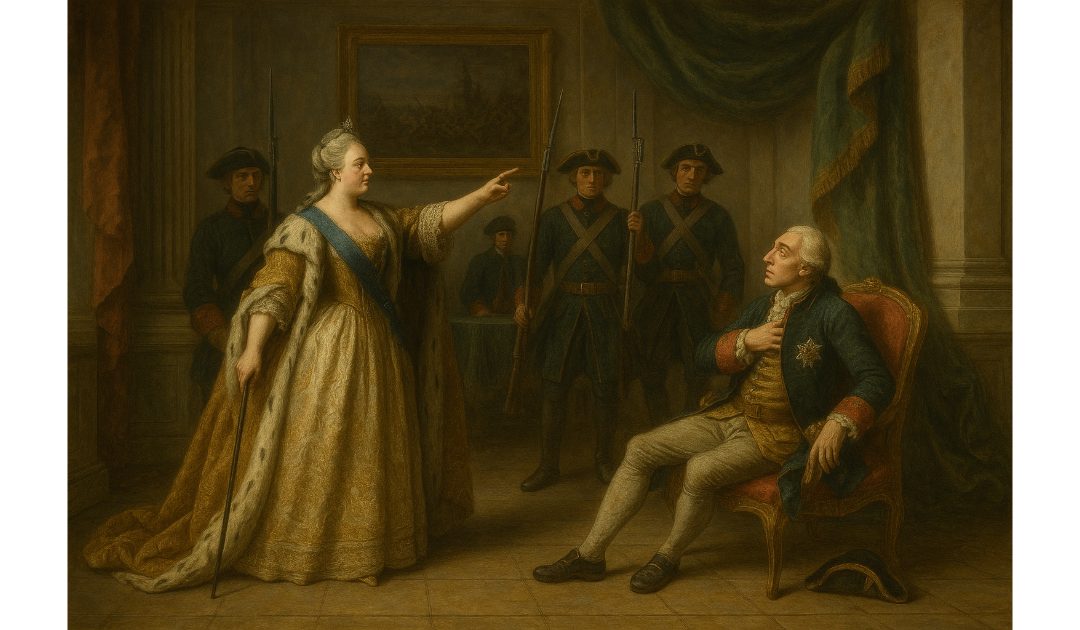On the 9th of July, 1762, Catherine the Great became Empress of Russia following a coup against her husband, Peter III. I mentioned Catherine in a post about Elizabeth of Russia.
Catherine the Great, also known as Catherine II, was one of Russia’s most prominent and influential rulers. She was born Sophie Friederike Auguste von Anhalt-Zerbst on the 2nd of May 1729 in Stettin, Prussia (now Szczecin, Poland). Catherine’s reign, which lasted until her death in 1796, is often referred to as the Golden Age of the Russian Empire. She was a formidable and enlightened monarch who expanded the empire’s territory, reformed its administration, and fostered the arts, education, and Western ideals.
Politically astute and intellectually curious, Catherine corresponded with many leading figures of the Enlightenment, including Voltaire and Diderot. Inspired by their ideas, she sought to modernise Russia’s legal and political systems. One of her significant achievements was the drafting of the Nakaz, a legal document that advocated for the reform of Russia’s outdated laws, emphasising principles such as equality before the law and the prohibition of torture. However, many of her progressive ideas were constrained by the prevailing autocratic system and the realities of managing a vast empire.
Catherine was also a key figure in the territorial expansion of Russia. Under her rule, Russia extended its borders significantly through military victories and diplomatic manoeuvres. The annexation of Crimea, the partitions of Poland, and the expansion into Alaska and the Caucasus regions were notable territorial gains.
Her domestic policies focused on centralising power and strengthening the nobility’s control over the peasantry, which unfortunately entrenched the serfdom system. Although she initially entertained the idea of abolishing serfdom, widespread peasant uprisings, such as the Pugachev Rebellion, reinforced her reliance on the nobility to maintain order.
Catherine was a patron of the arts and education. She established the Smolny Institute, Russia’s first state-financed higher education institution for women, and championed the development of Russia’s cultural landscape. The Hermitage Museum in St. Petersburg began as her private collection and grew to become one of the world’s most renowned art museums.
Despite the grandeur of her reign, Catherine’s personal life was often the subject of intrigue and gossip. She had numerous romantic relationships, which were sometimes politically motivated alliances. These relationships, however, did not overshadow her capabilities as a ruler and reformer.
The legacy of Catherine the Great is complex. She is celebrated for her contributions to Russia’s cultural and territorial growth and her efforts to introduce Enlightenment ideas. Yet, she is also criticised for the harsh conditions faced by the serfs and the autocratic nature of her governance. Nonetheless, her reign left an indelible mark on Russian history, positioning her as one of the most remarkable female leaders in history.

